Best Off-Roading Tips for Beginners, According to a Baja 1000 Champ

UTVs and dirt bikes are a monstrously good time, but sometimes you need a vehicle that’s more substantial to meet your needs (think safety and skill level) to go longer and farther into the wilderness. Trucks and SUVs rigged for the rigors of overlanding are perfect for this. (Quick aside, the difference between off-roading and overlanding is distance and duration: Overlanding is typically a long-haul trip spanning a week or more while off-roading typically encompasses a day or weekend.) If you’re new to the endeavor, we’ve got essential off-roading tips for beginners, according to a renowned expert.
You’d be hard-pressed to find a higher authority in off-roading than Brad Lovell. Since he started competing two decades ago, Lovell has won just about every major off-road competition there is from the rocks of Johnson Valley to the wide-open deserts of Baja California. He’s the perfect source of off-roading tips for beginners.
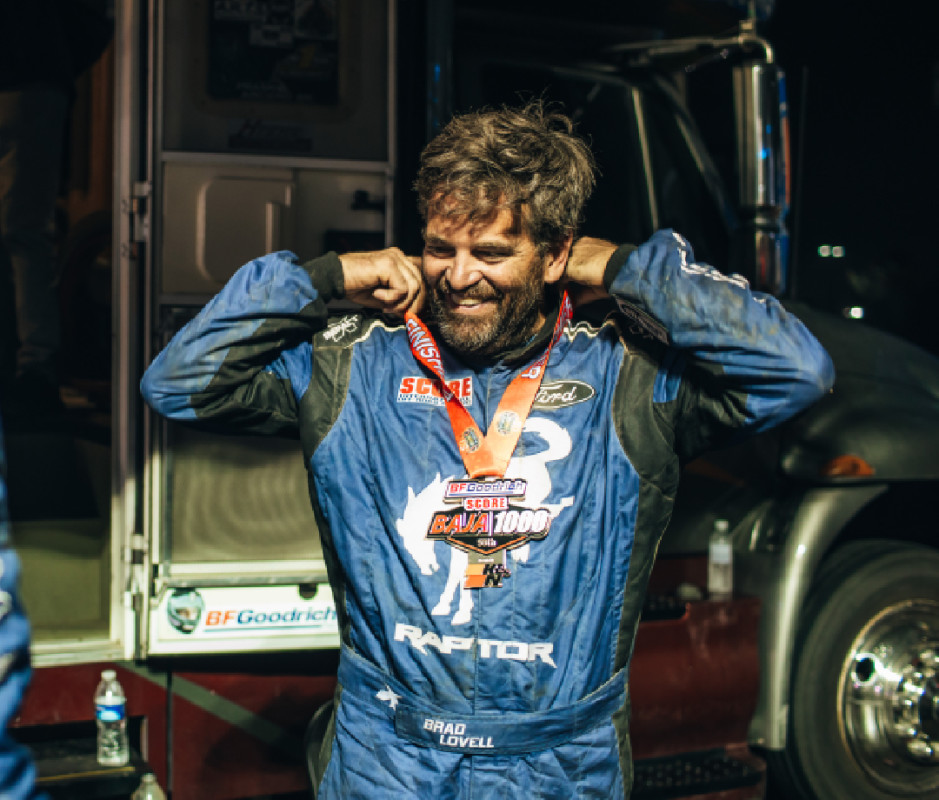 Brad Lovell enjoying his win at the 2023 Baja 1000 with a Ford Bronco Raptor.
Brad Lovell enjoying his win at the 2023 Baja 1000 with a Ford Bronco Raptor.
Courtesy Image
Lucky for us, Lovell also happens to be as down-to-earth and friendly a dude as you could ask for. So much so, in fact, that he agreed to sit down and share nine pieces of hard-earned desert knowledge with our readers.
We caught up with Lovell following his successful outing at this year’s King of the Hammers race. Here’s what we learned.
9. Off-Roading Doesn’t Have to Be Expensive 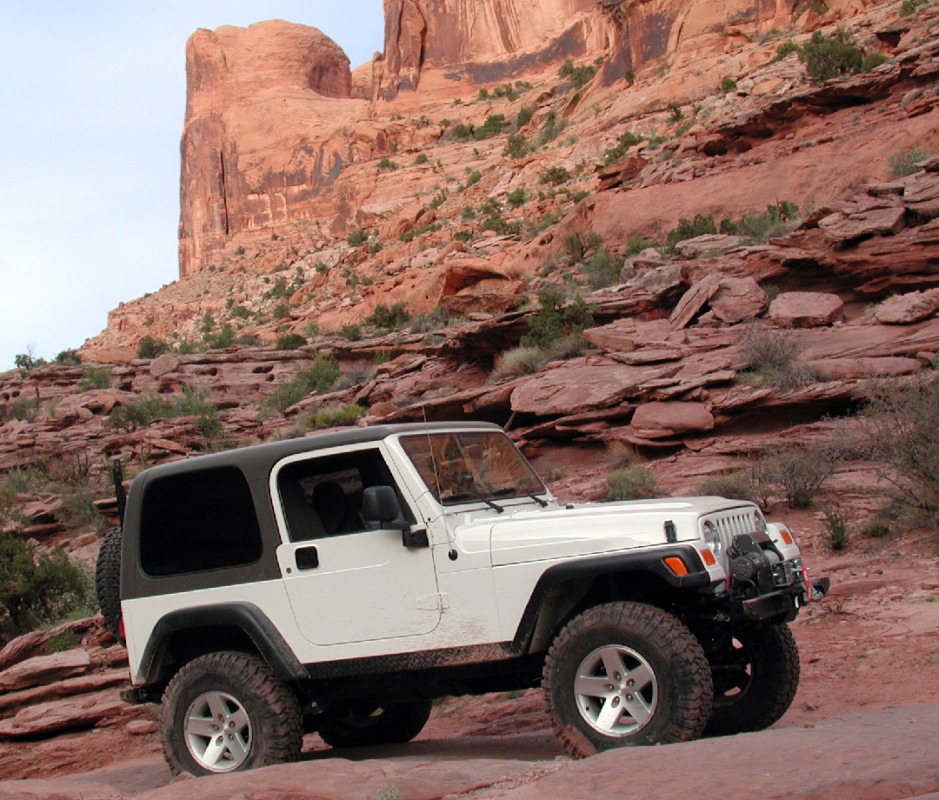 For first-timers, something simple like a Jeep JK is a great entry point to off-roading without having to spend a bunch of money.
For first-timers, something simple like a Jeep JK is a great entry point to off-roading without having to spend a bunch of money.
Courtesy Image
“I see a lot of people jumping into off-roading at the highest level they can afford, and they typically come back disappointed because their expectations aren’t met,” Lovell says. “This might not be what my sponsors want to hear, but you don’t need to go out and buy the flashiest billet parts to have fun off-road.”
Lovell knows this lesson better than most. When he first got into off-roading, it was in a stock 1988 Ford Ranger, and he still looks back on that period as one of the most exciting of his long career. He and his brother slowly built that Ranger into a serious rock crawler out of his home garage, largely using parts pulled from a nearby junkyard. By 2004, that same Ranger had grown into a proper race machine that was competing (and winning) at the highest levels of the sport.
“Don’t cheat yourself out of basic off-roading, because there’s love, adventure, and challenge along every step,” Lovell adds. “You can get out there in any vehicle with basic capability, then find out what modifications you need to make along the way to get around the next bend or over the next hill.”
8. Respect Our Wild Places  Three off-road vehicles driving into the badlands of Dinosaur Provincial Park.
Three off-road vehicles driving into the badlands of Dinosaur Provincial Park.
Davin G Photography/Getty Images
“Anyone can buy a capable vehicle and explore all these beautiful and wild places, but with great capability comes great responsibility,” Lovell says. “When I look back over the last 30 years, there’s always been an environmental fight to close access to certain places for off-roading. It’s hard to find solutions but I think it starts with all of us.”
There’s nothing worse than wheeling your way into a remote campsite only to find someone left a fire pit full of trash behind. Picking up after yourself is a good start, but if we want to preserve access to trails, we need to do more to set the right example.
“People who are new to the community often don’t understand the importance of staying on the trail rather than cutting their own path, and they’re ruining it for everybody,” Lovell adds. “Whether we like it or not, having access to these special places is a privilege, and we need to understand how our actions impact the environment and the culture around off-roading.”
7. Big Wheels Aren’t for Dirt 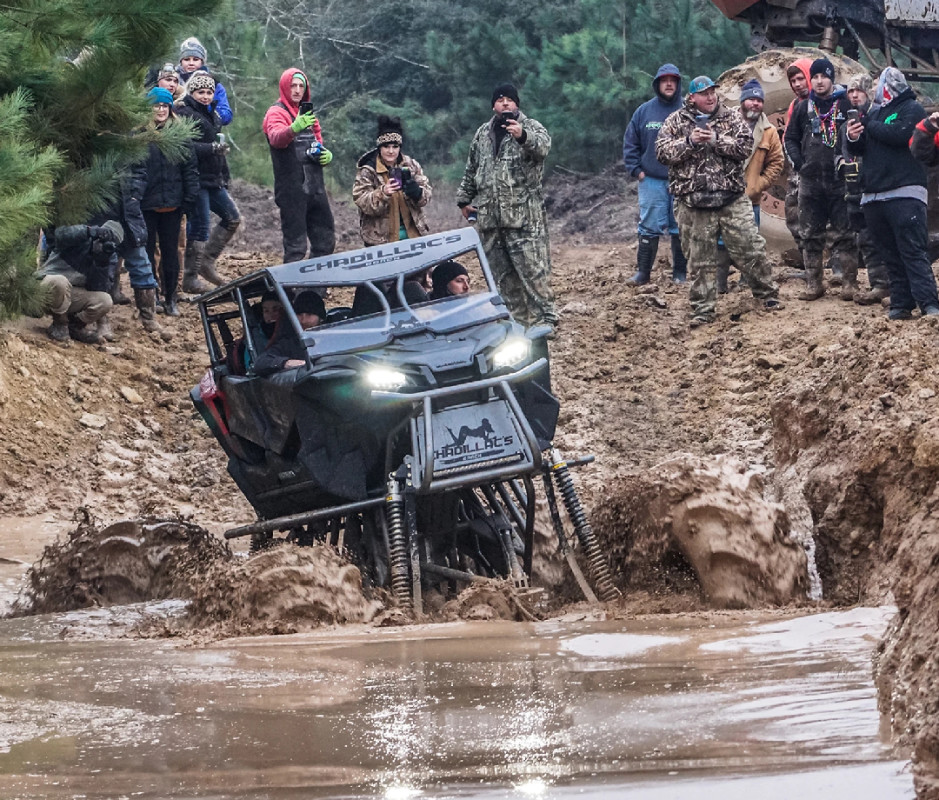 To really enjoy most off-roading in dirt, you don’t need huge wheels. Let the mud boggers use those.
To really enjoy most off-roading in dirt, you don’t need huge wheels. Let the mud boggers use those.
Courtesy Image
“In the off-road space, a 17-inch wheel is the gold standard, especially for anything up to a 37-inch tire,” Lovell says. “Tire manufacturers are flirting with designing even larger tires around 18-inch wheels, but we’re talking about motorsport applications there, not daily drivers.”
Put simply, anything over 18 inches on a 4×4 vehicle is for show, not performance. If 17-inch wheels are good enough for million-dollar trophy trucks, you’re kidding yourself if you think your Wrangler or Tacoma would do better with something else. (One more reason to point and laugh every time you see a lifted truck on big, shiny wheels.)
“Anything larger and you’re giving up compliance in the tire, and also risking hitting your wheels on rocks,” Lovell adds. “Our traditional saying in desert racing is ‘Bigger tire, smaller desert,’ so I’d also recommend you fit the largest tire you can within reason.”
Related: The Best G-Shock Watches of 2024
6. Use Your Brakes Downhill, Not Your Transmission  It might seem tempting to change gears on steep descents, but trust your brakes.
It might seem tempting to change gears on steep descents, but trust your brakes.
Davin G Photography/Getty Images
“There’s an old adage that you want to ‘Get ‘er in granny-low and let the gears do the work,’ ” Lovell says. “That might be true for something like my ‘43 Jeep, which is scary to think about, but in a modern vehicle you have plenty of braking power and you should be using it.”
Because both 2WD and 4WD systems send power selectively to specific wheels, you can actually lose traction unexpectedly if you’re depending on your gears to control the speed of your vehicle. Locking differentials can help control that variable, but Lovell says even running downhill in lower gears can be an issue.
“I don’t even bother downshifting in very technical downhill situations, because I might need a little stab of the throttle to correct a vehicle tip-up,” he says. “If your vehicle is gear-bound in a super-low gear, hitting the throttle is going to rev the engine up, but it won’t do what you need it to at the wheels.”
5. Let Speed Influence Strategy 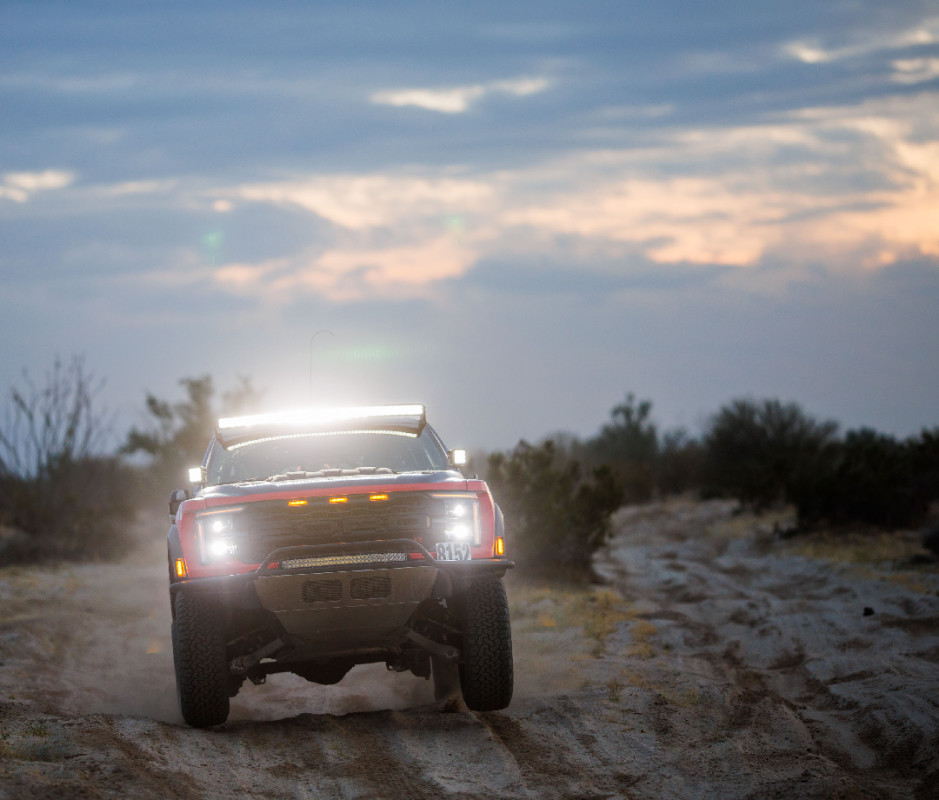 Stay in the ruts when driving fast off-road as that will help you stay in control.
Stay in the ruts when driving fast off-road as that will help you stay in control.
Courtesy Image
“When you’re driving slow over technical terrain, it’s about elevating the vehicle to keep the body off the ground,” Lovell says. “It starts to become subjective at a point, but if there’s a big rock in the middle of the trail, put your tires on it, don’t put it right down the middle of the vehicle.”
Lovell says this is a proven strategy to keep from getting hung up or high-centered on tough obstacles. That said, when things get faster, the approach changes completely.
“As you add speed, your vehicle becomes more fluid, and your tires will eventually find the low points on their own,” he explains. “The faster you go, the more you want to stay in the ruts because, if you put your tires in the low points yourself, you’re in control of it. If you’re riding fast on top of the ridges and you slide the vehicle, bad things can happen.”
4. Go Slow When Learning to Drive Fast 
Thianchai Sitthikongsak/Getty Images
“There has to be sensitivity around speed,” Lovell says. “The faster you go, the more risk you take. There’s a broad idea of what off-road racing is, but I can tell you it isn’t about always being wide open around every corner.”
To handle your rig at speed or slide around turns like a pro, finding the right place to practice is paramount. Unfortunately the definition of “right place” is also highly regional, and can range from a big, snow-covered parking lot to a manicured off-road park. Lovell’s main advice is to learn the limits of your vehicle, and get to know them in as low-risk an environment as possible.
In the desert of the Southwest, there are higher-speed trails and off-highway vehicle (OHV) areas, where you can see far enough ahead to know if someone is coming.
“Even then, learning these skills comes down to a lot of desert knowledge and prioritizing the safety of yourself and others,” Lovell says. “You’d be a jackass to try hitting jumps or going fast around berms somewhere like Moab because it’s full of people.”
Related: 2023 Dakar Rally: Off-Roading’s Most Relentless Endurance Test Yet
3. Don’t Cheat Yourself Out of a Journey 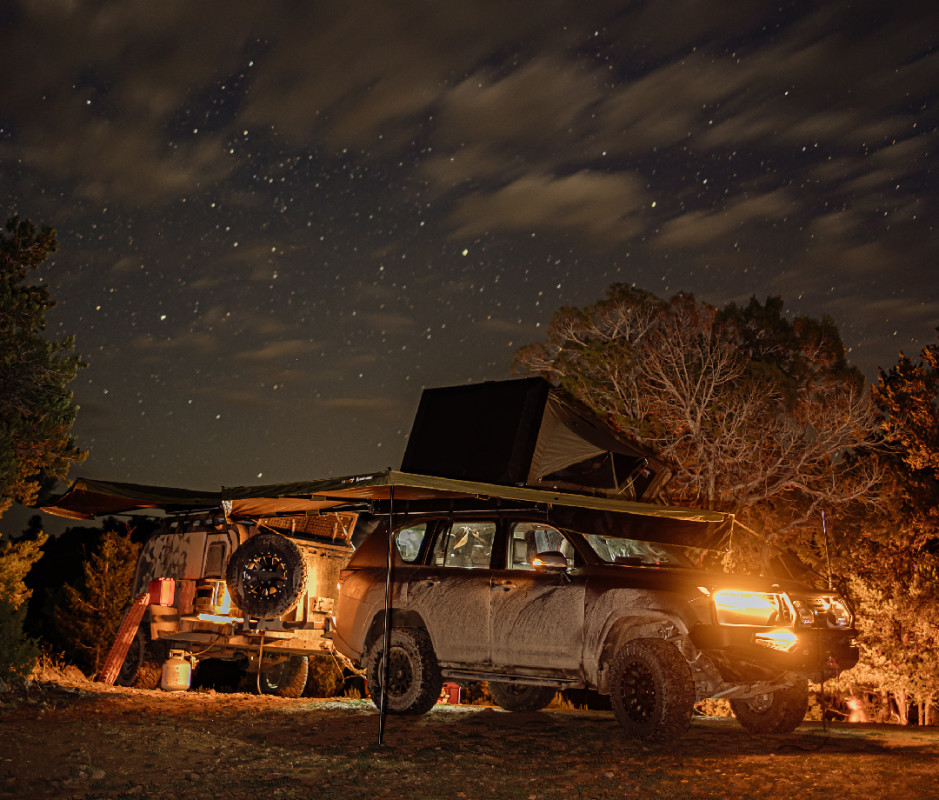 Make your trips off-road a little adventure, no matter where you end up.
Make your trips off-road a little adventure, no matter where you end up.
John Allen
“I’ve got an old ‘43 Willy’s Army Jeep that we drove from Colorado Springs to Moab all off-road, about 750 miles,” Lovell says. “We did it in the summer, and we purposely didn’t check ahead to see what passes were closed down or what issues we might run into because we were intentionally trying to find adventure.”
Excursions like this probably aren’t the best idea for beginner off-roaders, but a good off-road trip should always feel like an adventure, big or small. Lovell’s best advice for getting into an epic trip: Find a group to do it with.
“There’s great camaraderie in off-roading,” he says. “Going out with a group of like-minded people feels a lot like going out on a mission and accomplishing a goal, whether that’s mild or wild.”
Jeep Jamboree or Ford’s Bronco Off-Roadeo are some prime formal events, but you can also head out on your own adventure.
“That’s where I really find joy—getting out there and figuring it out on your own.”
2. Protection Is Important  They key to protecting your vehicle and enjoying off-roading is investing in tactical upgrades.
They key to protecting your vehicle and enjoying off-roading is investing in tactical upgrades.
Ian McDonnell/Getty Images
“A lot of technical off-roading involves driving until you hit something, then backing up and going around it,” Lovell says. “To do it, you need enough protection underneath to have confidence in your vehicle. Otherwise, it just feels like you’re driving a glass house through rocks.”
After a good set of tires, underbody protection is arguably the smartest upgrade aspiring trail junkies can make. So much so, in fact, that a pair of steel bumpers and full-length skid plates are one of the few modifications Lovell made to his Baja-winning Bronco Raptor this year.
“When I think about bumpers, I want them high and away from the vehicle,” he says. “You want some degree of damagability there—ideally something you can just sand and repaint after hitting a rock, rather than tearing up a factory-painted surface or molded plastic.”
1. Tires Are the Most Important Upgrade You Can Buy  BFGoodrich KM3 tires are more than suitable to the demands of off-roading.
BFGoodrich KM3 tires are more than suitable to the demands of off-roading.
Courtesy Image; Getty Images
“Tires are the first upgrade anyone should make,” Lovell says. “It’s literally where the rubber meets the road, and the only four points of contact your vehicle has with the ground unless you’re having a particularly bad day.”
Better tires mean better grip, and better grip means more confidence on the trail. A proper set of off-road tires will also add a significant degree of durability to both the tread and sidewalls over original equipment manufacturer (OEM) rubber, which reduces the likelihood of punctures and pinch flats.
“There are exceptions, but generally speaking if you go out and spend $1,000 on a set of tires, those tires are going to be significantly better than whatever you had before,” Lovell adds. “We run BFGoodrich KM3s on our King of the Hammers Bronco, because the sidewalls are more robust and the tread blocks aren’t going to disintegrate when I’m spinning them on super sharp rocks, but we’ll also run their KO2 on everything from our Baja race trucks to our support vehicles and personal vehicles.”
Related: Tips and Tricks for Overlanding on Sand
Why You Should Trust Us
In fact, his lifetime achievements earned him a place in the Off-Road Motorsports Hall of Fame in 2022, but he’s never been one to let success slow him down. Most recently Lovell put yet another Baja 1000 win under his belt behind the wheel of the new Ford Bronco Raptor, his second consecutive win in the class and his eighth total down in Baja.
In addition to his illustrious racing career, Lovell also comes from an engineering background, and was actually one of the major influences on the design, testing, and development of the new Bronco. That means Lovell has not only raced but also built and designed everything from handmade rock crawlers to mass-produced off-roaders, so his influence and expertise really can’t be exaggerated.


